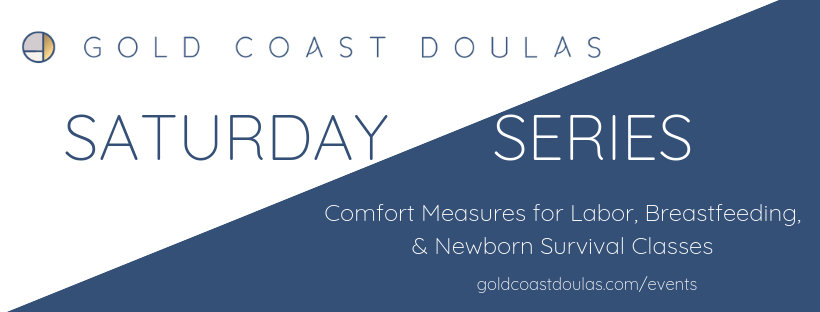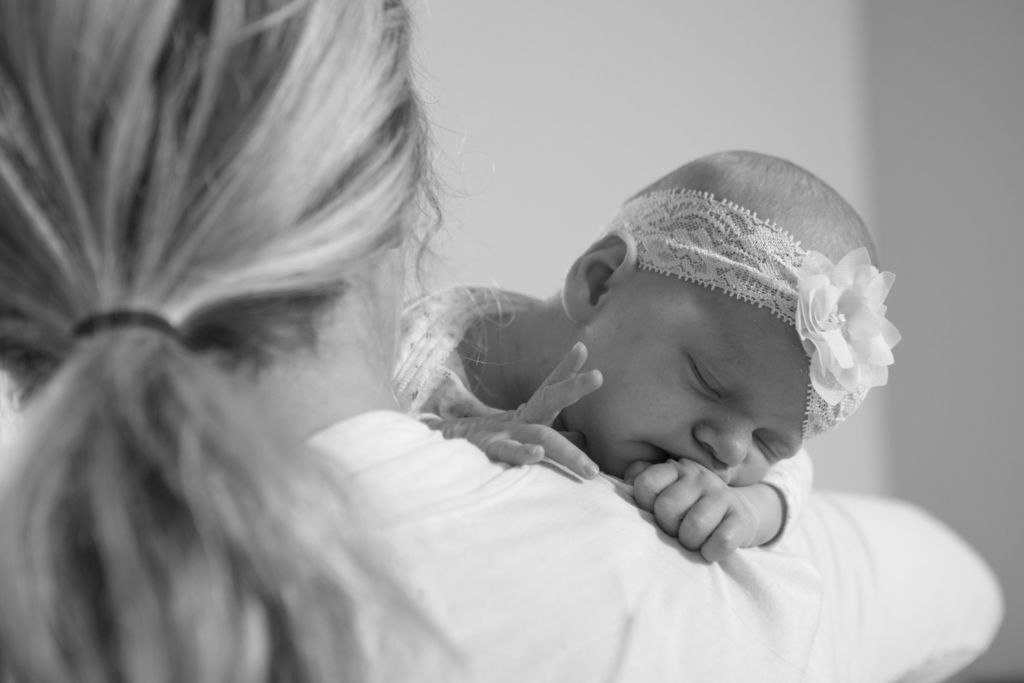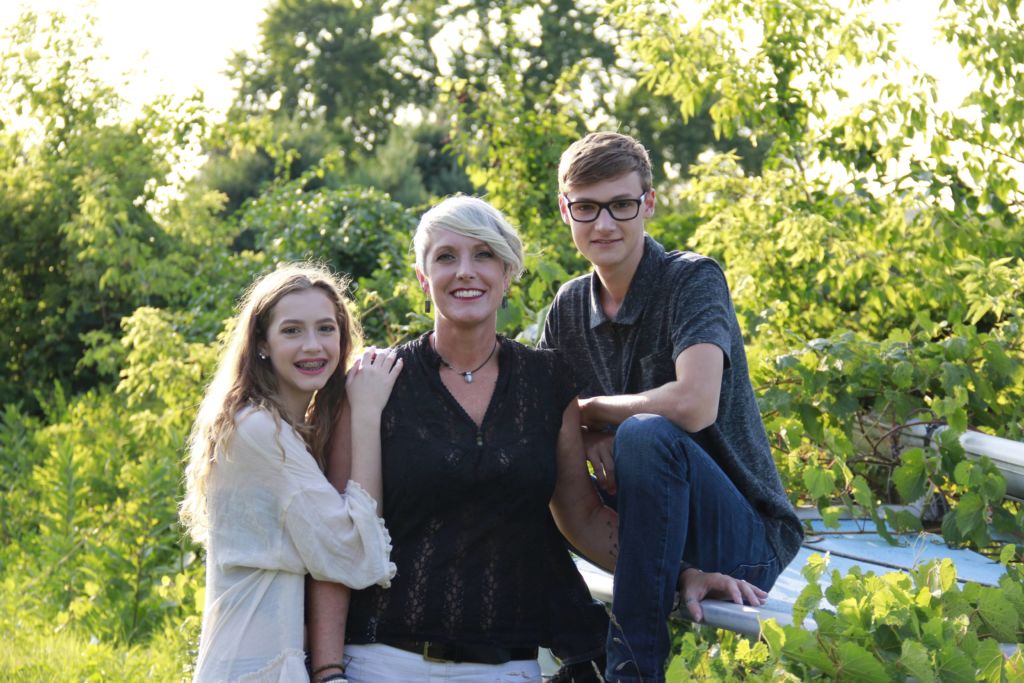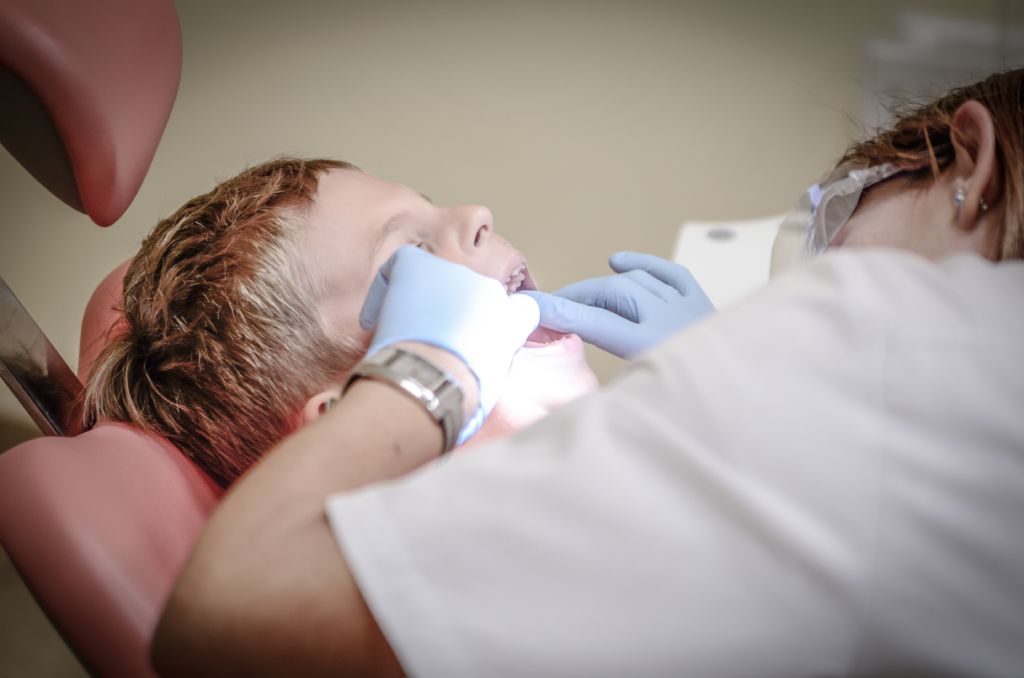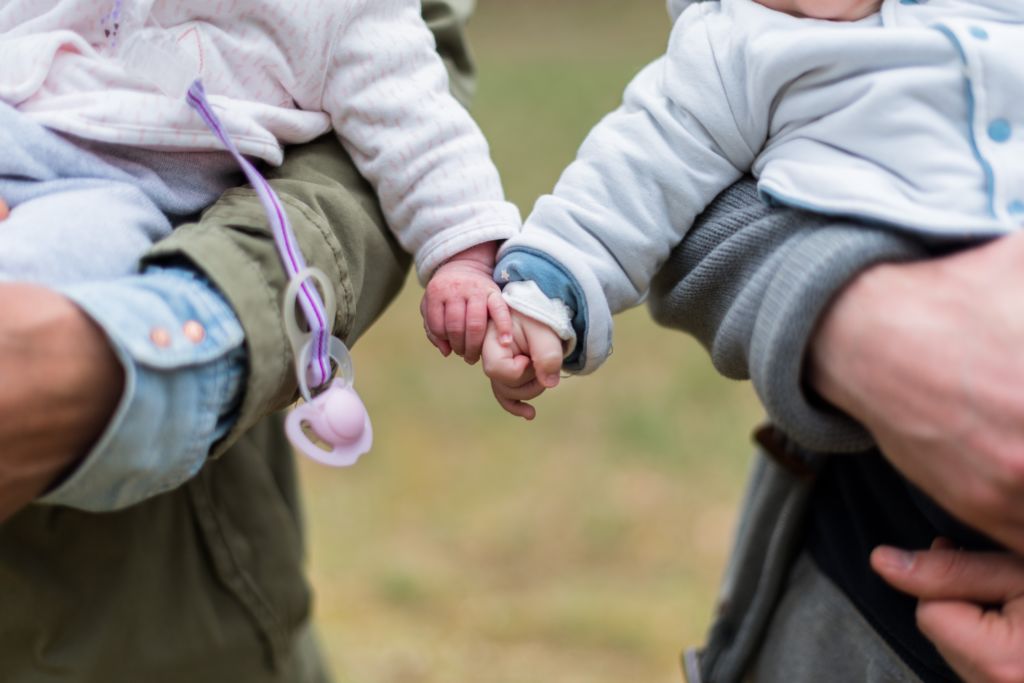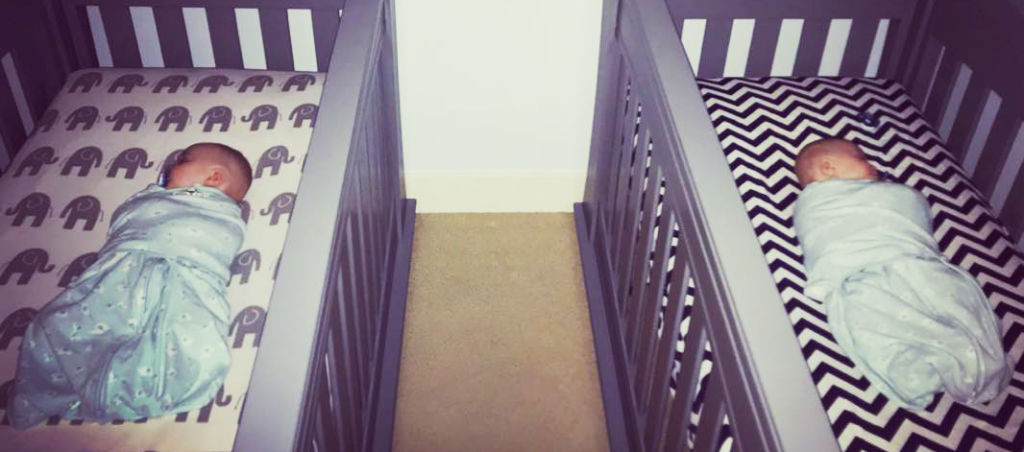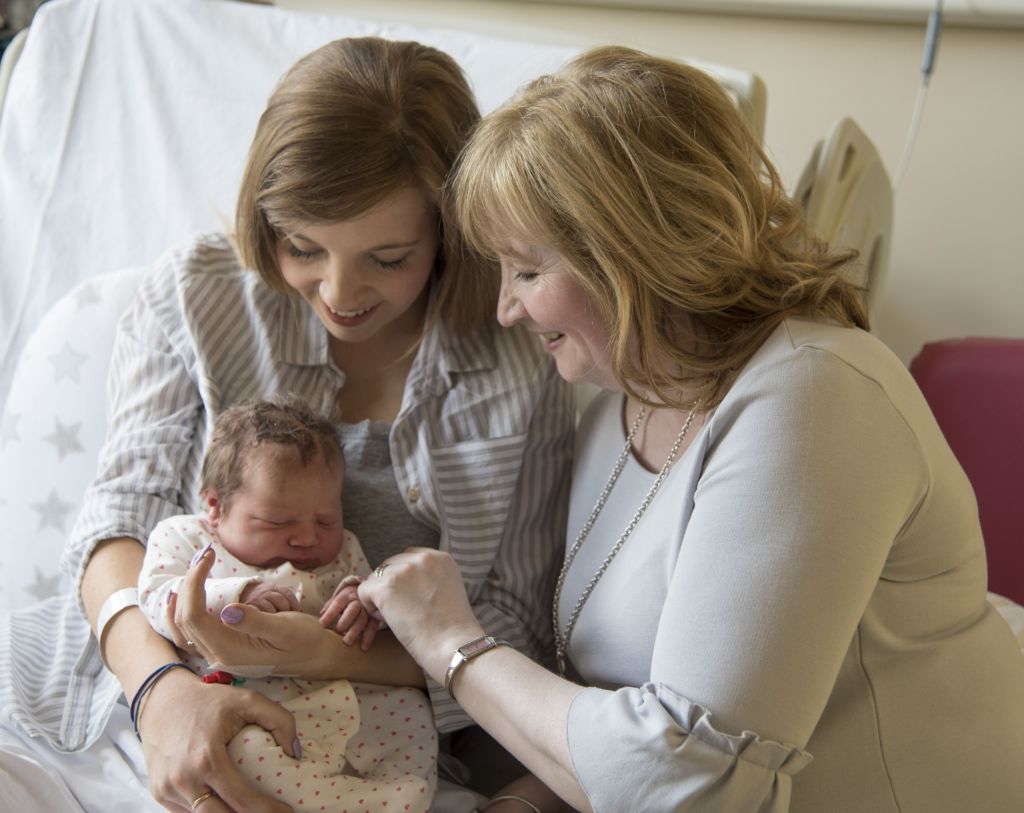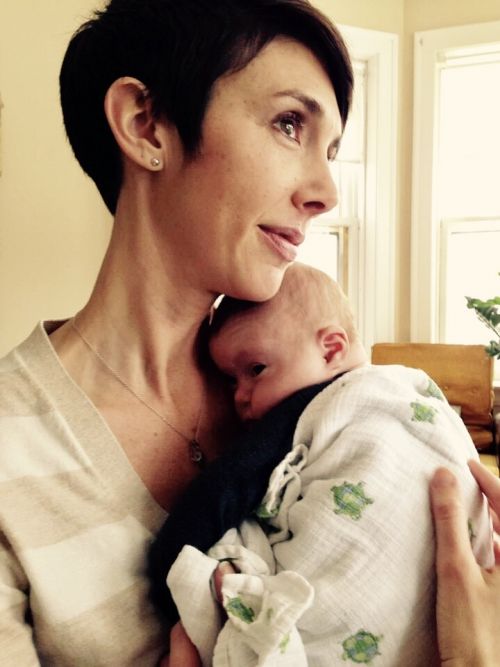Saturday Series of Classes: Podcast Episode #102
Kristin Revere, Kelly Emery, and Alyssa Veneklase talk about their Saturday Series of classes offered through Gold Coast Doulas. Each goes in to detail about what their classes cover including Comfort Measures for Labor, Breastfeeding, and Newborn Survival. You can listen to this complete podcast episode on iTunes or SoundCloud.
Kristin: Welcome to Ask the Doulas with Gold Coast Doulas. I am Kristin, and I’m here today with Alyssa and Kelly, and the three of us teach our Saturday Series of classes. So we’re going to talk about what each of our classes are and a bit about what we’re doing during COVID. So welcome, Kelly, and welcome, Alyssa.
Kelly: Thank you.
Alyssa: Hey. So, yeah, we could kind of talk first about why we — so we used to teach all of our classes separately and have different days and different times, but then we had clients who were taking a breastfeeding class and my newborn class, and they would be on separate days, separate times, and we know how hard it is for people to coordinate their schedules. So doing them all at once in a series on Saturday, and then Kristin adding on her comfort measures — you know, having three classes — it’s hard to find three nights in a week that either a pregnant person or a couple can both get off to take these classes.
Kristin: Right, and some of our clients work nights, and if they have other children at home, childcare has been easier to find on a Saturday than a weeknight. So that’s part of why we adapted to this format, and it’s also helpful that the Saturday Series is ala cart, so a client or student could sign up for just Kelly’s breastfeeding class or, you know, just the newborn class or all three. Or they can take them at different times, since we offer the classes every couple months. A client could take a class in September and then down the road later in the year take breastfeeding, for example, as it gets closer to their due date.
Alyssa: And for the students who do choose all three and do them on the same date, it can definitely be a long day. When we were doing the classes in person, we had a lunch break and then another break in between. But the feedback we’ve gotten so far is that people really like knocking these out one after another. And then because of COVID, they’ve been virtual, so that’s actually been kind of nice. They don’t have to leave their sofa. They can feel a little bit more relaxed, grab snacks. So that’s worked out well, too. But our next series is in September, and we plan on doing it in person for the first time since COVID, but that could change at any minute, depending on…
Kristin: Right. And our office is in Eastown, and we’ve talked about having a smaller class size and how we’re going to pivot due to COVID and all of, you know, the sanitation that will need to be done. But our Zoom classes have been going well. I wasn’t so sure about the fact that Comfort Measures is so hands-on, how that would work virtually, but the students seem to enjoy it, and they were hands-on as I instructed virtually. So it went over pretty well the first time.
Alyssa: Same with breastfeeding. How does that — you know, you had said, Kelly, that it was going well virtually, but were you a little bit nervous at first about, you know, like, how do you show a position and, you know, what a proper latch might look like, through a computer?
Kelly: Yeah. Yeah, that was something — speaking of pivoting, we had to do pretty quickly because people were still having babies and they’re still learning to breastfeed. That is not something in life that can just stop. So, yeah, getting up and going on the Zoom and all the technology was rapid, and it was — it’s pretty slick. You know, what I do is just like in the in-person classes, I show videos, and so I can share my screen. I show videos, clips of things that — it will make more sense when they actually have their baby, but I think instead of me just talking about it, showing a visual and the videos and all of the pictures that I have. I have just a slew of pictures over my 20-some years of doing this, so it’s able — the people are able to really see what I’m talking about better when I share my screen. So it’s all actually working out, and the parents love it. And, you know, they love being together in a class together, but also I’ve gotten great feedback about the Zoom classes, that they love that they can just sit on their own couch in their pajamas and eat dinner, you know, or eat a meal and have Dad be right there with them, as well. So it’s all working out.
Alyssa: Well, Kristin, do you want to talk about — so the series kind of starts with the Comfort Measures. Then it’s Breastfeeding, and then Newborn Survival. So you want to maybe in that order talk about each of our classes and what they’re about?
Kristin: Yes. So Comfort Measures is a hands-on class that the couple is encouraged to attend, but certainly I’ve had the birthing person attend without a partner, as well. And so we go over breathing, relaxation, and it definitely doesn’t replace a traditional comprehensive childbirth class. I’m not going to cover the stages of labor in two hours. But it’s more about different positions that will relieve discomfort, both while they’re at home, if they’re birthing in the hospital, in the early stages of labor, or positions to utilize further along in labor in the active stage as well as the pushing stage. And we do cover breathing, as well.
Alyssa: So is it more to have the partner understand what’s going on and allow the partner to offer these comfort measures?
Kristin: The partner does learn how to do some of the different measures. Hands-on massage, light touch massage is covered. We go over hip squeezes and a lot of the doula tools, just a variety of positions, like hands and knees and leaning up against a wall and dancing, sort of rocking in labor, as well as, you know, using the birthing ball. And then we talk about different positions that they could consider pushing in, like squatting and sidelying. And I answer questions, and there are some handouts that they use to just get a comfort level for where the partner and the birthing person are at as far as what their expectations of birth are and how comfortable they are supporting a partner. So there’s a lot of communication in the short class, as well.
Alyssa: And Kelly, what about your class?
Kelly: It’s called Breastfeeding: Getting a Strong Start, and it’s a lot about — my goal, anyway, is to get the mom and her partner comfortable and feeling confident about at least starting out. You know, I think it’s sometimes overwhelming. It is a three-hour class, so it is a long time, and a lot of content is covered, but my goal is not to, like, overwhelm the parents with, like, what to do over the next, like, two years of breastfeeding or whatever, like that. Because I think people in this moment when you’re pregnant, especially, you can take little chunks of information that are going to be relevant to you in the moment. And so just getting off to a strong start, at least to get you through those first early days and weeks, you know, of breastfeeding, and then let you exhale a little bit and kind of find your answers as they are relevant to you is something that I’ve found over the years of doing this, honing, about what moms really want to know and what they need to know in the beginning. So I might go over — I’m a really strong proponent of going over anatomy in the beginning, just because I think if moms know how their breasts work and how their babies work, they can figure out — they can put a lot of these dots together and make it make sense for them in their situation. So, for instance, one of the first things I talk about in anatomy is, like, in our middle school health ed class, we skipped right over the breasts, I’m quite sure. You know, they talk about your periods and, you know, maybe some birth control. I don’t know. I don’t even remember what they all talked about. But I don’t remember talking about lactation or anything about the breasts other than that they get bigger, and then you wear a bra. That’s about it. And so I’m like, wait, wait, wait. This is an incredible two glands we have here that sustain life. They have so much to do and so much to contribute, and they’re kind of a natural next stage of being pregnant is lactating. So it’s kind of all jumbled up together there, and I feel like in our society we kind of — as women, we’ve kind of not learned a lot about our breasts. So I talk about what’s happening while we’re pregnant, what happens in the first couple days after delivery, and then how lactation and how their breasts change and make milk and all these other wonderful things that they do in the days and weeks, you know, after delivery. Yeah. So I’m big on helping women know about their bodies and then seeing how it works, and then I think it’s less of a mystery when things unfold because we just — you’re like, oh, yeah, we talked about. That’s what I’m supposed to be doing, or that’s what my breasts are supposed to be doing. Those little bumps on my areola, they mean something and they do play a role.
Alyssa: What do those mean?
Kelly: Those are your Montgomery glands, and they enlarge, you know, when you’re pregnant. They secrete a couple things. One is — it’s almost like a self-cleaning oven. One is that they secrete the substance that kind of — it’s an antimicrobial, so kills bacteria. It kind of keeps your nipples clean and your areola clean so you don’t have to scrub them. A long time ago, like back in the ’50s, we used to think you had to scrub your nipples, and believe it or not, we would put alcohol on them before the baby would — like, we would sterilize your nipples, like we did with bottle nipples, before we would put the baby on you. Just ridiculous. And come to find out, you know, Mother Nature’s already taken care of that with those Montgomery glands. Another thing that they do is they secrete — it’s an exocrine gland, which means it excretes something, you know, kind of like a sweat gland. So they also secrete something that kind of keeps your nipple from drying out. Keeps it kind of supple and moist.
Alyssa: Kind of lubricated a little bit?
Kelly: Yeah. So all of those things — and one of the reasons I mention that is when moms think, oh, I have to buy some lanolin or some nipple ointment, those things are fine if you want to use them, but just use them just on your nipple. You don’t have to smear it all over your areola because they can — if you smear up too much, they can block off those Montgomery glands, and then they can’t do their job. So that’s one of the first things I talk about because it’s one of the most visible things you see when you get pregnant is your areola gets the little bumps on them, and then they darken and, you know, all of these things happening. And then the next thing, the other part, huge part of the class, is getting the partner involved. The baby’s other parent is going to be a huge part of breastfeeding, and I go over the research of how statistically, whether breastfeeding works or not has a lot to do with the mother’s partner and the worth that they feel and that togetherness. And I joke that, you know, they’re going to be with you at 2:00 a.m., not me, and they’re the ones who know what motivationally you need to hear in the moment. You know, what gets you — what makes you feel better. What kind of cookies do you like? What do you need in that moment? And the partner is more tuned into that than I am, of course, you know. So I can give some technical advice if I’m working with you postpartum to help with breastfeeding, but the partner is going to be there to be the other really important team member, and so that’s why I super, super encourage them to come to the class. The in-person class or the Zoom class, any kind of class, so there’s four ears listening to all of this and not just two. For the mom to have to listen to it and then go back and regurgitate it all, you know, it’s another burned on her, and she may forget things. And I spend a lot of the time giving advice about what dads and partners can do to be helpful because I think they feel like they’re on the sidelines and they can’t be a part of breastfeeding. And so I totally dispel that, and I give them lots of things, you know, concrete things that they can do that can be very helpful to breastfeeding.
Alyssa: I know that everyone who’s taken your class has told me they love it. They think you’re just so knowledgeable, and they had no idea about all these things, and they definitely go into it feeling more confident.
Kelly: Awesome. That’s my goal.
Alyssa: Was there anything else you wanted to say about your class?
Kelly: Well, I just want to say that I love being part of this entire series because knowing that I’m part of blending it together, like the big picture — like, the labor feeds into the breastfeeding. The breastfeeding really ties closely with the newborn survival. They’re all so well-interwoven that I think it’s great for the parents to have all of this information at once or, you know, dole it out as they need to, but just to have all of the information because then they get a sense of the bigger picture, I think. It just makes total sense when all of these are taken together. So I’m happy to be a part of this series, for sure.
Alyssa: We’re happy you are a part!
Kristin: So at what stage in pregnancy would you suggest someone take your breastfeeding class? And I’ll also ask the same question of Alyssa and then answer that myself.
Kelly: I would say the seventh month. I wouldn’t wait to the last month because there’s a lot going on, you might go early, blah-blah-blah. But, you know, you can take it in your ninth month, for sure. But, yeah, I would say the third trimester would be good, start of the third trimester.
Kristin: Alyssa? What would you say for Newborn Survival?
Alyssa: You know, I would say third trimester, too, just so that this all is fresh in their heads. The only problem is waiting that long, we do go over some items that are — you know, like baby registry items. And by that point, usually they’ve already registered or had baby showers and gotten everything. So that makes that a little bit irrelevant. We still go over it, and I tell them, you know, keep things in packages with tags on. If you don’t use them, you can always return them. So we still go over it, but I think to do it any earlier, you’d kind of forget all of the stuff we’ve gone over.
Kristin: I would say ideally the third trimester, though I’ve had students take it in the second trimester and still retain the information and practice the hands-on techniques that they learn. A lot of my students also have doulas within Gold Coast or are working with me directly, so, of course, the doula is a great reminder of the different positions and comfort measures for labor and also some of the relaxation techniques that we learn. And, certainly, you know, as far as who should take the class, we are also quite different from other childbirth education classes in that many are suited — just like Bradley method, for example, just for one type of birth. Like, for those seeking an unmedicated birth. For Comfort Measures, I have clients who want an epidural as soon as they get to the hospital or, you know, are having a home birth or are seeking an unmedicated hospital birth, so a variety of situations. And, Kelly, I know that you have students who want to pump, and you do, of course, have the pumping class, the back to work pumping. But it’s not for one type of parent or birthing person. I know, Alyssa, you have everyone from attachment parents taking your newborn class to those who are more mainstream in parenting style.
Alyssa: Yeah. You kind of have to be open to all of the options and all of the parenting styles. I would say, you know, for yours, it’s important. Kelly, you know they’re going to breastfeed if they’re taking your class, or at least going to attempt it. And I don’t know in my class, so I go over if they’re not breastfeeding. We’ll go over bottle feeding. Maybe they want to just pump exclusively and bottle feed. I go over it very briefly. Sometimes I can completely skip it because they’ve also taken your class, Kelly, and I don’t need to go over anything.
Kelly: I think with my breastfeeding class, you’re right, there are some moms who just want to pump and bottle feed, and we do go over working and bottle feeding and how to combine all of that, for sure. But even the part about the anatomy that I was telling you about, it’s good for the moms to know the anatomy of how, also, to maximize that with a pump, because there are ways — the ways that some of our hormones work with a baby, trying to also trigger those with a pump takes a little bit of knowledge, you know, and a little bit of practice. So even if you’re not going to breastfeed, knowing about your breasts and how they work would benefit you even if you’re going to be pumping, because then you can work with a pump to work with your anatomy and how all of the pumping and maintaining your milk supply goes together.
Alyssa: I feel like I should sit through your class. I haven’t sat through yours, and I always love having a refresher on breastfeeding because when I’m working with sleep clients, we talk about feeding a lot. So I feel like I should put the next September Series class on my calendar to sit in yours.
Kelly: I know, and I should — I want to learn more about your sleeping, too, because that’s a big question when it comes around to breastfeeding. They are so intricately tied together.
Alyssa: So my Newborn Survival class, I started or I created because, you know, working as a postpartum doula — I don’t anymore, but when I did, you start hearing the same questions and same concerns from the parents over and over. If only someone had told me this! Why didn’t I know that? How come nobody told me that this would happen? When you start hearing the same things over, then I’m like, yeah, I had these same concerns and questions and fears when I was a new mom, too. So I just kind of started compiling all these things and talking to experts and put this Newborn Survival class together, and it has real-life scenarios. Like, things that happened to me, things that happened, you know, in my work, and how do we deal with these? And then it’s very — you know, we do talk about, hey, has anyone changed a diaper? If they haven’t, we’ll show them. But that’s probably the most surface level type stuff. I want to get into, hey, babies cry. There’s no way around it. How do we minimize that? What do we check for? And how do you communicate? Like, you and your baby are a team, and from a very, very young age, they are communicating with you, and you need to figure that out. So just giving them really pragmatic steps to — you know, the first few weeks, your baby’s just going to eat, sleep, poop, pee. That’s about it. But once, you know, six weeks rolls around, there’s kind of this schedule forming. You probably have a pretty good idea of when they want to eat. Maybe you start to see some sleep patterns forming by six to nine weeks. And then if they’re crying, what does that mean? What causes that crying? How do we stop that crying? What happened when the crying started? And then talking a lot about feeding. People usually want to ask me a lot of sleep questions, even though this isn’t a sleep class. We go over sleep. But a lot of it’s, well, you know, if my baby’s not sleeping well, do I just let them cry? Never, never, never is my answer; never. No. We don’t just let them cry. But if they’re not eating enough, no amount of letting your baby sit in that crib will do any good because they’re hungry. So we talk a lot about feeding, whether it’s breastfeeding or bottle feeding. And then we go over things like, you know, common skin issues. Like, everyone always gets weirded out by cradle cap and baby acne and maybe some rashes, diaper rash. And then like I mentioned, we go over some things that are not worth spending your money on. Here’s some things you really need. And then talking, too, about the partners keeping communication open and setting goals and expectations for each other ahead of time, because once that baby comes, you don’t have the time or mental wherewithal to be dealing with that in the moment at 3:00 in the morning. So if you have these expectations set ahead of time, it’s really important. And then obviously talking about, you know, letting them know that there are resources available. They don’t have to go through this alone. There are — you know, Kelly’s a lactation consultant. She can do an in-person or a Zoom visit. We have postpartum doulas who work day and night. All these resources are available to them. And then we go over a lot of soothing methods. I show them my swaddling methods. And we talk about bathing, too. Bathing is a big one for parents that they’re usually kind of freaked out about. But yeah, it’s just kind of how to survive those first few weeks or months home with a new baby because it’s a little bit scary when you walk through that door for the first time holding a human that you have to keep alive.
Kristin: Great summary! So let’s talk a little bit about — again, we mentioned breaks within the format and a little bit of the timing structure of each class. So the Saturday Series usually starts off with my Comfort Measures class. We have switched our schedule a few times, but my class is two hours from 9:00 to 11:00, and then there is a lunch break. And then we get into Kelly’s class. And, Kelly, you mentioned your class is three hours. And then there’s a short break, and then Alyssa has an hour and a half for Newborn Survival.
Alyssa: Yeah. I think there’s a half an hour break to grab a snack, go to the bathroom.
Kristin: Right. And then as far as the fee for the class — again, the classes are a la carte so you could purchase one class or all three, and each class is $75. And traditional insurance does not cover the Saturday Series, but if a student has a health savings or flex spending, most plans do cover childbirth classes.
Kelly: And I would add, Kristin, on the same for breastfeeding classes. As part of the Affordable Care Act, breastfeeding support and supplies and education should be covered, and I provide a superbill for my class as well with all of my codes and my tax ID number and everything that they would need to self-submit.
Kristin: Fantastic. And, Kelly, did you want to touch on your pumping class that’s separate from the Saturday Series?
Kelly: Yeah. I have a class for moms who want to go deeper into just the pumping. During my Saturday Series, I will go over some pumping and working and everything, but to dive deeper into that of what that looks like on a professional level and an emotional level, like leaving your baby, what that’s like, and if I have to travel, and how do I maintain a milk supply and what if my milk supply goes low? Lots of little details swirling around. If you’re still having, you know, after this class, if you’re still having questions about that, or if you want to skip over the whole breastfeeding class and just do the pumping and working one, I have a class, and you can just go to my website and you’ll see. It’s called Work Pump Balance, and it’s an almost-three hour class in and of itself. It’s self-paced modules that you can go through, and it’s myself and then a — my friend Mita, and she pumped for a year for both of her kids and worked full time. She had a very demanding career in a very male-dominated industry, and she made it work. She gives a lot of insight about how — you know, a lot of the laws have changed since she’s done it, so that only benefits moms even more. But how to logistically travel and calling clients and work around this when you’re really the only female in the whole — it’s a big company, but you’re the only female around. So, yeah, we dive deeper into that.
Kristin: Fantastic. And Gold Coast also offers a private multiples class for any of our clients or students who are expecting twins or triplets. So we do offer each of the individual Saturday Series of class privately, since our Series is offered every couple of months. There is the option of taking just breastfeeding privately through Zoom and/or, depending on COVID, in person. So did each of you want to — I know, Alyssa, you just recently taught a newborn class on Zoom.
Alyssa: Yeah. We just did a private one because they were being induced this week. So we just did it last week. Yeah. It’s great. It kind of allows the couple an opportunity to ask the questions that they might be afraid to ask in front of other people, although I feel like with my class specifically, I make it very clear that there’s no such thing as a stupid question, and I think most of the students do feel very comfortable asking anything. But it’s just a little different when it’s just me with one couple. They can ask whatever they want freely. And I do get told that it’s nice for them to learn the same techniques together so that it’s not, you know, one person saying, well, I think we should do that, and I think we should do that. You know, they can kind of take all the information I’ve given and make their own decisions from there based on what they’re comfortable with. So I’ve been told several times that they like that they’re hearing the same information together and not different information from different people at different times.
Kristin: That makes sense, and yeah, it is nice that if someone wants to take a class last minute or wants the individual attention. My students have enjoyed just being able to customize the comfort measures based on what their birthing goals are.
Alyssa: Yeah. So if anyone wants to register, they can go to our website and register for, like we said, one, two, or all three. We also have the Multiple class and a HypnoBirthing Series. And you can always reach out to any of us with questions.
Kelly: I appreciate you doing this, and I’m looking forward to the next class in September.
Kristin: Thanks for listening to Ask the Doulas with Gold Coast Doulas. You can find us on SoundCloud, iTunes, and on our website. These moments are golden.
Saturday Series of Classes: Podcast Episode #102 Read More »


